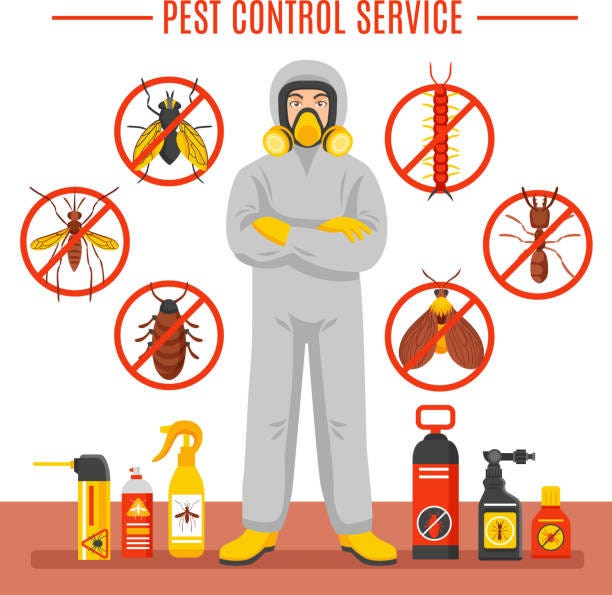Reliable A1 Bed Bug Treatment in Charlotte - Safe and Proven Approaches
Reliable A1 Bed Bug Treatment in Charlotte - Safe and Proven Approaches
Blog Article
Bed Pest Therapy Breakdown: Contrasting Chemical Vs. Non-Chemical Solutions
In the realm of parasite control, specifically when handling the consistent concern of bed bugs, the choice in between chemical and non-chemical therapy services can be a crucial one. Both methods use unique advantages and downsides, affecting aspects such as performance, safety considerations, and total price. By examining the nuanced details of each method, a clearer understanding of which path to go after in resolving a bed pest infestation can be obtained.
Performance of Chemical Therapies
Chemical therapies for bed insect problems have been commonly recognized for their fast and powerful efficacy in removing these insects. When thinking about the efficiency of chemical treatments, it is critical to recognize that they can provide a detailed and quick service to a bed insect trouble.
Furthermore, chemical treatments have the advantage of supplying recurring effects, meaning that they can continue to remove bed pests even after the first application. This residual action is specifically valuable in combating any type of prospective re-infestations. Additionally, the fast activity of chemical therapies can bring alleviation to people dealing with severe bed bug problems, permitting them to regain control of their space rapidly.
Security Problems With Chemical Solutions
One essential facet that calls for careful factor to consider when utilizing chemical remedies for bed bug treatment is ensuring the safety and security of owners and the atmosphere. Exposure to specific chemicals used in bed pest treatments can lead to respiratory concerns, skin irritation, or various other adverse reactions, specifically in individuals with pre-existing conditions or sensitivities.
Moreover, the environmental influence of chemical solutions is an additional substantial factor to consider. Some pesticides utilized in bed insect therapies might be damaging to beneficial insects, wild animals, and communities if they seep into the dirt or water supply. It is necessary to use chemical therapies deliberately, complying with safety standards, and taking into consideration much less harmful choices to mitigate these threats and guarantee the efficient and safe monitoring of bed pest invasions.
Advantages of Non-Chemical Methods
Taking into consideration the potential security issues and ecological effect connected with chemical services for bed insect treatment, checking out non-chemical strategies provides an appealing alternative with several distinct benefits. Non-chemical therapies are environmentally pleasant, as they do not contribute to air or water air pollution, making them a lasting choice for insect control.
Additionally, non-chemical remedies can be efficient in targeting bed insects, consisting of hard-to-reach areas where chemical treatments might not penetrate. Approaches such as warmth treatment, vacuuming, vapor cleansing, and mattress encasements give detailed removal without making use of harmful chemicals. Additionally, non-chemical strategies can be less turbulent, calling for marginal prep work and enabling quicker reentry into dealt with locations. Overall, choosing non-chemical bed insect therapy approaches not just prioritizes safety and environmental management yet likewise guarantees comprehensive and efficient parasite control.
Limitations of Non-Chemical Treatments

Additionally, non-chemical therapies usually call for numerous applications to attain successful eradication. This can be lengthy and might not always guarantee total removal of all bed bugs and their eggs, particularly in concealed or hard-to-reach locations.
Moreover, the success of non-chemical therapies greatly depends on proper implementation and thoroughness, which can be testing for individuals without professional competence. Insufficient application of non-chemical methods might lead to incomplete eradication, bring about persistent problems and the requirement for added therapies.
Consequently, while non-chemical treatments have their benefits, it is necessary to recognize these limitations and consider them when determining one of the most reliable approach for taking care of bed bug invasions.
Expense Contrast: Chemical Vs. Non-Chemical Options
Given the restrictions connected with non-chemical treatments, an essential facet to examine in the context of bed bug administration is the price comparison in between chemical and non-chemical options. In contrast, non-chemical therapies like warmth therapy or vapor can be much more expensive, with expenses ranging from $1,000 to $6,000 for a whole home. While the initial price of chemical treatments may appear reduced, numerous therapies may be required to totally eradicate the infestation, potentially click to read more boosting the overall expense.
Final Thought

Thinking about the possible safety and security worries and ecological impact associated with chemical options for bed pest therapy, checking out non-chemical strategies presents a click to investigate promising option with a number of distinct benefits.Provided the restrictions associated with non-chemical therapies, an important facet to review in the context of bed bug management is the cost comparison between chemical and non-chemical choices. In contrast, non-chemical therapies like warmth treatment or vapor can be more costly, with expenses ranging from $1,000 to $6,000 for an entire home. While the initial cost of chemical treatments might appear reduced, several therapies might be needed to totally eliminate the infestation, possibly raising the overall expense.In verdict, when comparing chemical and non-chemical bed insect treatment choices, it is vital to think about performance, safety, benefits, constraints, look here and price.
Report this page